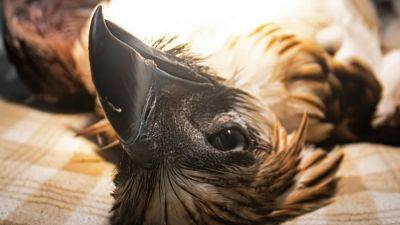Philippine villagers smear mud on their bodies to show devotion to St. John the Baptist
BIBICLAT, Philippines (AP) — It is well before daybreak in Bibiclat, a village in the northern Philippines surrounded by rice fields. Using only light from their cellphones to cut through the darkness, devout Catholics venture into the fields. If they’re fortunate, they will find an area where carabaos bathe, since the mud is softer there.
They smear mud over their bodies and then soak dried banana leaves in the mud. After dressing themselves with the leaves, they walk to the church of St. John the Baptist.
Entire families as well as solitary devotees line the road to the church. The crowd swells outside the church yard, lighting candles and waiting for the priest to lead a Mass.
This practice, commonly referred to as “Taong Putik,” or Mud People Festival, has been passed on from generation to generation in the community as a way of showing devotion to their patron saint, St. John the Baptist.
According to church leader Regil A. dela Cruz, the tradition started in 1836 when poor Filipino farmers went to the church to give thanks on the saint’s feast day. He said they smeared themselves with mud as a gesture of faith and humility.
“They covered themselves with dried banana leaves or vines so that they were not recognized, as there was a lot of discrimination against the poor during that time,” dela Cruz said.
Only men practiced the tradition until 1944, when a “miracle” happened, he said.
In that year, some Japanese soldiers were killed by Filipino guerrilla fighters in the village. In response, Japanese troops gathered villagers for execution. The village prayed to God and St. John the Baptist as the men lined up to be killed.
“Rain poured and the killings were canceled because the Japanese soldiers believed this was a sign






